You probably don’t quite get it, and you keep asking the question, “What is a sinking fund?” Well, for instance, you know you have to pay for major car repairs at some point in the future.
You may not know when, but you know you’ll be needing money for your car maintenance and repairs. How do you intend to pay for this expense when it hits? Make use of your credit card or pay it off from your emergency fund?
Sinking funds, in the business world, are known as funds set up to pay off debts or bond issues. However, sinking funds also serve a valuable purpose at the personal finance level.
A sinking fund helps you set aside money for an expected future expense. It helps to keep you from blowing your budget every month because you didn’t plan for certain expenses.
It also assists in keeping you thoughtful and proactive when it comes to spending and saving your money.
A sinking fund is quite different from an emergency fund.
Money in an emergency fund is reserved for emergencies or unexpected expenses only, while money in a sinking fund is used for non-emergencies.
Money set aside in an emergency fund saves you when there is an unfortunate event or expense which you didn’t predict or expect such as losing your job or a major medical catastrophe.
Taking money from your emergency fund to pay off non-emergencies creates an actual sinking scenario when a real emergency occurs.
For instance, your car is faulty and so you take some money from your emergency fund to purchase a new car, only to get hit by a medical emergency after your car purchase.
How do you intend to survive such a financial situation?
Some expected expenses like buying a new car; making a property tax payment; paying for insurance; attending weddings; going on vacations; buying holiday gifts; replacing your washing machine, air conditioner, water heater, dishwasher; etc. can be paid off easily when they arise if you set aside some money for them.
You don’t know when they will come up, but you do know that they will come up at some point in the future.
A sinking fund is also different from a savings account. The two are quite similar but differ in one way.
A sinking fund is kept in a separate account specifically for an expense, while a savings account can hold funds for every purpose.
A typical example to help you understand how this kind of fund works is this. Let’s assume you have $800 to set aside in your savings account every month.
After one year, you’ll have a total of $9,600.
You might decide to replace one of your cars, and so you go down to the dealership and use the $9,600 you saved up for your new car purchase.
What happens when your dishwasher breaks down, an unexpected medical bill arises or you have to buy a gift for your kid’s birthday, your friend’s birthday and for your parent’s 40th anniversary just after you have purchased your car?
How do you manage a situation like that? Swipe your credit card and pay it off later or use part of your emergency fund?
This scenario is an actual sinking situation where you find yourself scrounging for funds to get through urgent expenses.
However, you don’t have to sink! A sinking fund can change the narrative entirely.
With the same $800 for savings set aside for sinking funds every month, you can divide the $800 into four categories: $100 for medical bills, $100 for gifts, $200 for home maintenance and repairs and $400 for car repairs or for a new car.
By year-end, you’ll have a total of $1,200 for your medical expenses, $1,200 to buy all the presents you want for your friend’s birthday, your kid’s birthday and your parent’s wedding anniversary, $2,400 for home maintenance and repairs, and $4,800 for car repairs and maintenance or a new car purchase.
This way, you will succeed in paying off your medical expenses, replace your dishwasher, buy presents for your parents, kids, and friends and also be able to make some minor car repairs so you can continue using it while you save up until your new car fund is enough to pay off the expense.
You may also decide to get another means of transportation you can trust for $4,800. So you see, everything is sorted without using a credit card or touching the emergency fund.
Why You Need to Set up a Sinking Fund
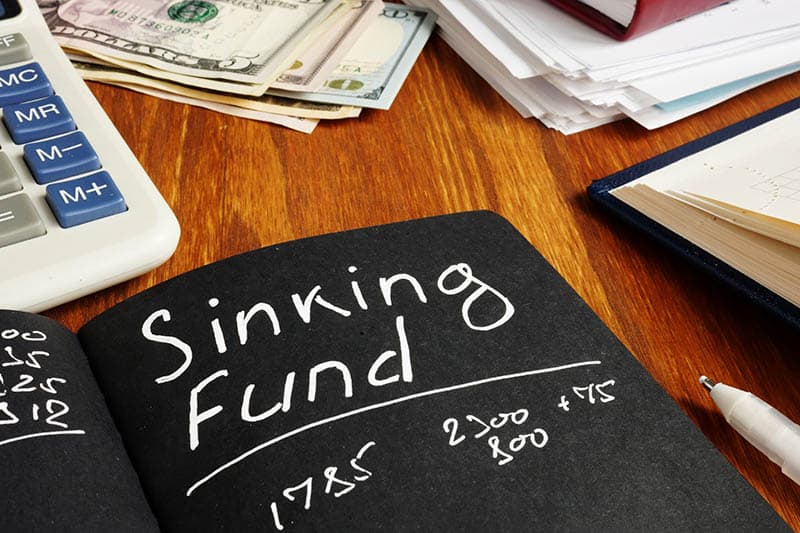
Now that you have answers to the question, “What is a sinking fund?”, you might want to know why you need one.
Irrespective of how well you make your budget, if you are not taking into account known, irregular expenses, then you’ll be taken off-guard when you’ll need to pay for such expenses.
You may end up reaching for your credit card every time such expenses come up.
Review what you spend on for a moment, and you will discover a trend. There are certain expenses you make every few months, every season or every year.
They could be annual dues, home maintenance, car maintenance, vehicle registration, vacation, sports fees, birthdays, back-to-school expenses, and holidays.
Most times, these expenses are put on hold with the excuse that there is still time to raise money for them; however, time usually runs out too quickly.
With a sinking fund, you will be able to save for these expenses and pay for them when they arise without having to turn to your emergency fund or pull out your credit card.
You’ll also get to enjoy guilt-free spending. When you have saved particularly for a specific purpose, you won’t feel guilty spending large amounts on that expense when it comes up.
You also get to determine the amount of fun you want to have. Starting early to save for that vacation, Christmas or your child’s birthday means you won’t have to cut your fun short because of your budget.
You get to have fun to the fullest without bothering yourself over going home to meet zero money in savings or debt.
Since you have worked for it by saving up for that expense, you won’t feel guilty when it’s time to enjoy it.
One big stress factor in the history of human existence is the monthly payment of debts.
Without those debts and the payments that go with them every month, our stress levels are bound to reduce drastically.
A sinking fund will help you avoid debt.
When you save for a particular expense, you pay for it in advance instead of paying after the purchase. You won’t need to pay creditors or accumulate interest expenses.
The opposite becomes the case here.
While you save with a high-interest rate account, you have a chance to earn accrued interest on your savings while building up your sinking fund.
With a sinking fund, you can save for virtually anything you want—the choice is entirely yours.
One good thing about this kind of fund is that it keeps you ready. It’s only a matter of time before something breaks down and must be repaired or replaced eventually.
It sets your mind at rest knowing that you’ve already set some money aside for that expense.
How to Set-up Sinking Funds
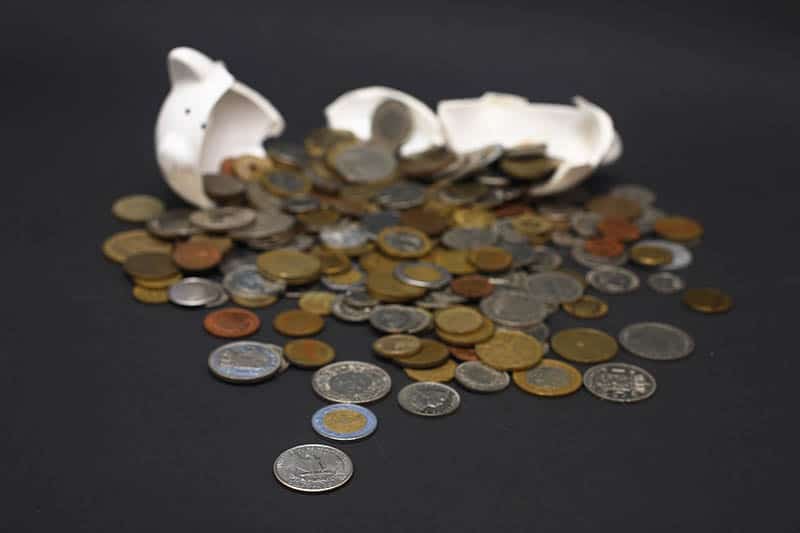
Setting up sinking funds isn’t a complicated task, but it can be tricky. Here’s a step-by-step guide to help you set them up.
- List everything you want or need to set aside money for
The list may be long, just list them all out. You probably have a couple of expenses that should have sinking funds.
In case you are having a hard time making a list of what you need to set aside money for, here are different categories you can consider.
For home maintenance—consider different home repairs, kitchen updates, HVAC, flooring repair, plumbing, roof, HOA dues, and appliances.
Car maintenance expenses will include alignments, tires, battery, windshield, brakes, tuning belt, engine, insurance deductible in case of an accident, spark plugs, etc.
For birthdays—consider kids, parents, siblings, friends, and your kids’ friends
Kids’ school expenses can’t be left out. Uniforms, crafts, supplies, field trips, fundraisers and school summer camps should be considered.
Also, kids’ recreation and sports will require expenses like registration fees, uniforms, sports gear, lessons, sports camps, tournaments, and sports travel.
RELATED: How Much Does It Cost To Raise A Child: Child-Rearing Stats
Consider holidays—Halloween, Thanksgiving, Memorial Day, winter holidays such as Christmas / Hanukkah / Kwanzaa, spring holidays such as Easter / Passover, Valentine’s day, the 4th of July, and Labor Day Weekend.
Think of your yearly vacation, large vacation, and mini-vacation travel expenses.
Pets too—consider food, insurance premiums, vet expenses, and grooming.
Consider medical expenses that are not covered by your health insurance.
- The next thing you should do is to pick the major ones or ones most important to your family and you. You need to be realistic when setting up your sinking funds. You can’t possibly set up sinking funds for everything on your list, so you need to choose the ones to save for based on your priorities.
- Decide how much you need to pay off these expenses and when you think you will need them. Again, you also need to be realistic.
- Find out the total amount you need, then divide it by the number of months you have until you need the money. What you get is the amount you are expected to save each month. For instance, you’ll need to save $100 every month for ten months if you have a $1,000 expense coming up in 10 months’ time. Do the same for all the other expenses.
- Create a section in your budget for each expense.
- If necessary, open a different bank account for your sinking fund.
- Set up automate transfers to your sinking fund account from your checking account every month.
- Spend the money in your sinking fund when you need it and start the process over again. Maybe you saved for a dishwasher last time. You probably won’t be needing to replace it soon, so you start setting aside money for something else. It could be your refrigerator this time or that cruise you’ve always wanted to go on.
How Big Should Your Sinking Fund< Be?/b>
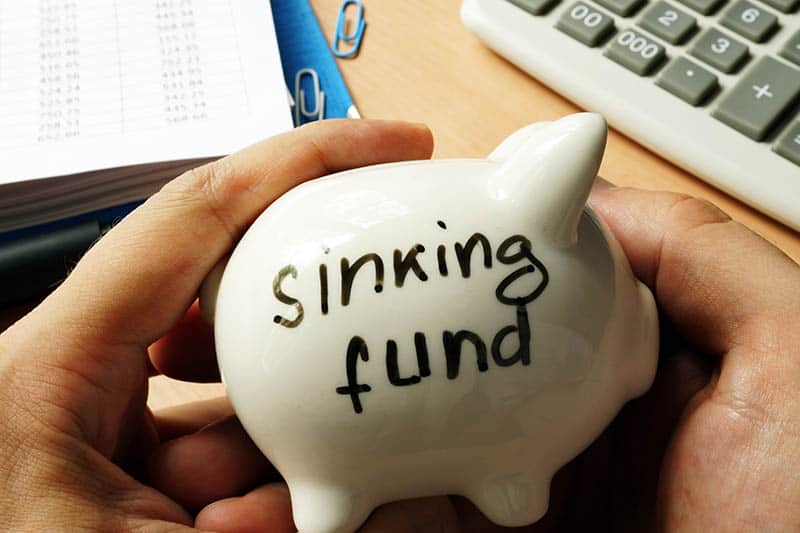
The size of your sinking fund depends on your total anticipated expenses.
You need to be realistic when setting up this fund or you won’t have any money left for other savings goals, debt payment or any other short-term goal.
Don’t be carried away with creating sinking funds for too many things.
Three umbrella categories that should cover your sinking funds are Large planned expenses which include expenses like a family vacation or a new car; Unexpected expenses like replacing home appliances, a new roof, or a broken furnace; and Forgotten expenses which includes clothes for growing kids, sports activities, school field trips or yearly subscriptions.
Where Should You Keep Your Sinking Fund?

Sinking funds can be kept anywhere as long as you can keep track of them.
Consider choosing a place where your money can be liquid and you can access it simply with ATM withdrawal, quick online transfer or by writing a check.
You may also want to keep your funds in an envelope set aside for a specific expense. The most important thing is that you know where it is and can access it when you need it.
If you decide to open a single bank account for all your sinking funds, you need to find means to separate the money for each expense when it’s time to spend.
You can keep a ledger, tracker or spreadsheet to keep track of the amount of money in each fund at every point.
You may also want to keep your funds in multiple accounts. It can be very helpful if your bank offers you multiple savings accounts, especially when you prefer doing all your transactions online.
Ensure that you meet minimum balances for each account if there is one.
However, options that allow you to access your money anytime can only work for you if you are disciplined with your savings account.
If you are not good at managing your savings account or you find yourself constantly transferring money in and out of your account, then you should consider a money market account.
A money market account will be better to save with since it’s slightly less accessible when compared to your checking account and savings account.
Money market accounts also offer higher interest rates plus a layer of security in case you are tempted to cash in the money before time.
Keeping Track of Your Sinking Funds

It’s very easy to become distracted and lose track of your sinking funds.
Keeping track of your sinking funds is very crucial because you won’t want to forget, use your car maintenance and repairs fund for your friend’s birthday, and then start wondering about what happened to the money when the main expense comes up.
To keep track of all the funds, if you like to use paper and pen, you can keep a log. If you prefer spreadsheets, you can also use a spreadsheet.
You can also keep track of your funds with your bank’s app if your bank offers multiple savings accounts.
There are several ways to keep track of your savings. Choose one that works best for you.
Should You Set Up a Sinking Fund When You Have Debts?
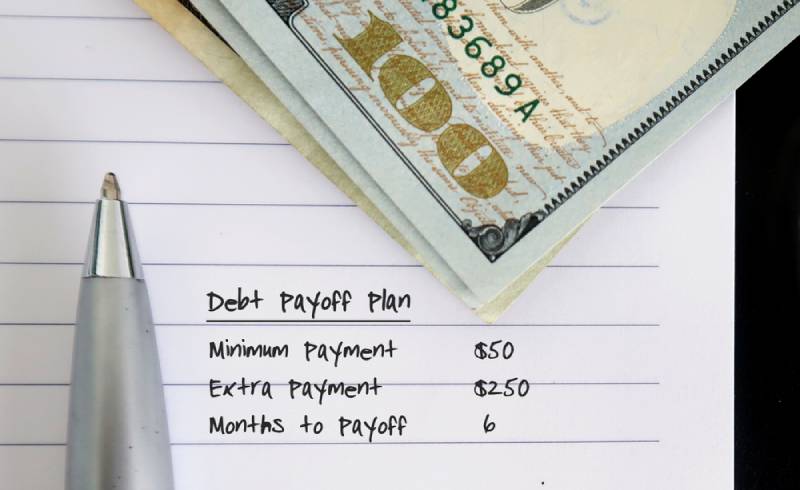
Setting up a sinking fund when you have debts depends on what the fund is for. Your high-interest debt is an emergency, and you need to make efforts to pay it off.
However, some expenses are so very essential that you will need to come up with money from anywhere to pay for them—for instance, a new set of tires that you would be needing soon.
For such expenses, it’s best to set aside money since it’s better to pay for them in cash rather than use a payday loan or credit card.
If it’s for an avoidable expense like a vacation or holiday, then No. In such cases, you need to focus more on your debts instead.
Taking a vacation shouldn’t be a priority for you if you have a high-interest debt.
Final words
Having a sinking fund is a vital part of your financial plan. It is as important as your emergency fund.
Setting up this particular fund will keep you from screwing up your monthly budget all the time and allow you to leave your emergency fund for real emergencies.
It might seem less urgent, but it is urgent.
You don’t have all the time you feel you have until that expense catches up with you.
The earlier you start saving for that major expense, the better.
Like this article? Please share or pin it for later. You can also stay in the loop and follow me on Facebook, Instagram or Pinterest.
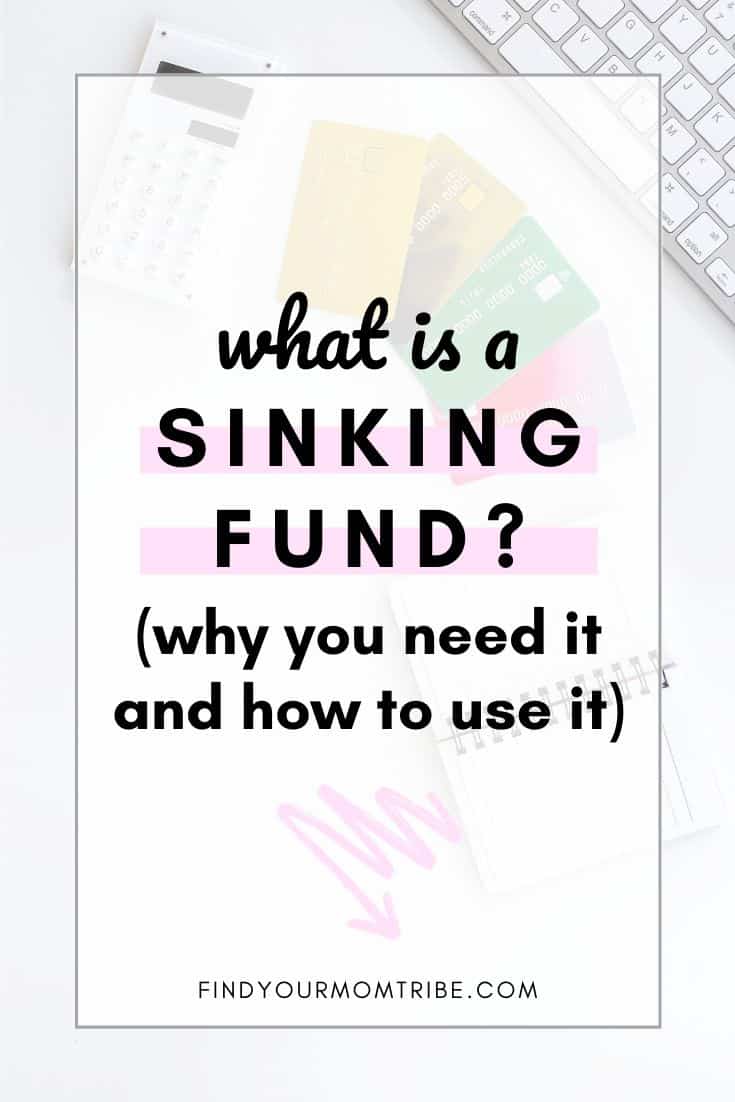
This post contains affiliate links. Please see our full disclosure for more info.

